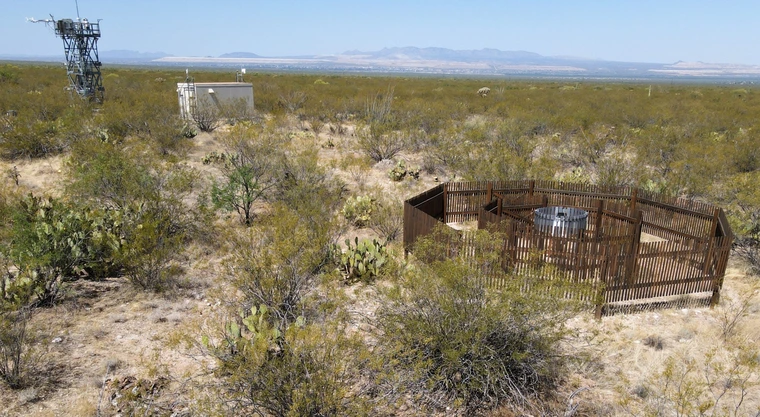Like other terrestrial field sites across the Observatory, NEON’s automated instruments at SRER collect meteorology, soil, and phenology data. You can read more details about NEON’s meteorological measurements here.
Due to the low stature of the vegetation community at SRER, the NEON flux tower is relatively short—only 8 meters in height. The tower uses multiple profile levels to capture a full vertical profile of atmospheric conditions from the top of the surrounding shrub/scrub canopy to the ground. Creosote, velvet mesquite, and Zinnia are among the most common vegetation species found in NEON’s flux tower airshed at SRER.
Adjacent to NEON’s flux tower at SRER are five sensor-based soil plots. Sensor measurements in the soil arrays include profiles of soil temperature and moisture below the surface and throughfall, relative humidity, and photosynthetically active radiation aboveground.
SRER is the core terrestrial site within Domain 14; therefore, precipitation is measured using a Double Fence Intercomparison Reference (DFIR) in addition to throughfall collectors located in the soil plots (see photo below).
There are two phenocams mounted to the NEON flux tower at SRER: one near the tower top to capture above ground phenology, and a second camera near the bottom of the tower to capture below canopy phenology. Imagery from NEON’s SRER flux tower phenocams and other NEON sites are uploaded to the PhenoCam Network.
NEON’s automated sensor infrastructure produces open data which are freely available. Additionally, the infrastructure can also be considered a platform for Principal Investigators to add additional sensor sets to collect their own data. All requests are first reviewed by NEON’s Assignable Assets Program. Because NEON does not own any of the land on which NEON infrastructure operates, research teams are responsible for obtaining any required research permits and site access permission prior to any work being conducted. Learn more about NEON’s Assignable Asset Program and how NEON can support additional research activities.

NEON’s Double Fence Intercomparison Reference gauge (foreground) and the instrument hut and flux tower.
NEON/Battelle [Colin Williams]

